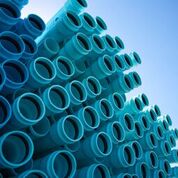Vinyl production is an extremely small source of dioxin and is used every day in important products. The vinyl industry has studied and worked to reduce its contribution to dioxin. In fact, vinyl manufacturing reports ambient emissions to air and water on the order of four to seven grams of dioxin per year equivalent to 100 grains of salt. Other dioxin sources include forest fires, volcanoes, burning wood in fireplaces, exhaust from diesel-powered vehicles, and manufacture of other building materials. Overall, dioxin levels in the environment have been declining for decades, according to data from the U.S. Environmental Protection Agency (EPA). During this time, Production and use of vinyl has substantially increased.
According to the EPA:
- Dioxin emissions from industrial sources in the United States have decreased significantly since 1987
- Vinyl’s dioxin emissions are a tiny fraction of the overall total. In 2016, dioxin emissions to air and water from chor-vinyl manufacturing chain represented 4.2 grams TEQ out of a total 78.1 grams TEQ which is about 5.4% emitted by the entire industry.
- PVC piping is one of the world’s most sustainable products, making it ideal for long-term term use in underground infrastructure.
- It requires less energy and fewer resources to manufacture than old-technology materials, and its production creates virtually no waste.
- It is produced with sustainable and abundant resources: chlorine, which is derived from salt, and domestically produced natural gas.
- A study by Utah State University’s Buried Structures Laboratory supports a PVC pipe design life of 100+ years or greater.
- Municipalities using PVC piping have experiWater enced life cycle costs at 30 to 70% less than those of metallic pipe.
- PVC’s corrosion resistance also helps reduce water main breaks.
- Utah State University’s Buried Structures Laboratory found PVC pipes have the lowest break rates compared to other pipe materials
- The European Plastic Pipes and Fitting Association found PVC sewer pipe could be installed 30% faster than conventional pipes.
For more information on PVC pipes, including a PVC pipe EPD and other studies and reports, visit www.uni-bell.org, or download their PVC pipe standards app—found in both the App Store and
Google Play.


